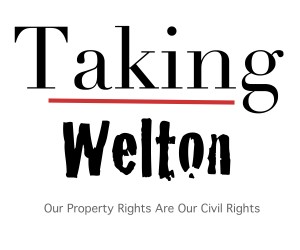Eminent domain is defined by the last 12 words of the U.S. Constitution Fifth Amendment and is refered to as the ‘Takings Clause’. U.S. Constitution Fifth Amendment.
“…nor shall private property be taken for public use, without just compensation.”
Over the years the definition of ‘public use’ has been eroded to include public benefit, in that the property taken does not have to be used by the public. Landmark case Kelo v. New London was heard by the US Supreme Court in 2005 and it’s ruling instigated eminent domain reform law in 43 states.
Colorado property owners are also protected under Article II Section 14 and 15.
“Private property shall not be taken for private use unless by consent of the owner, except for private ways of necessity, and except for reservoirs, drains, flumes or ditches on or across the lands of others, for agricultural, mining, milling, domestic or sanitary purposes.”
Colorado approved legislation in 2006 that further protects property owners rights, specifically with Colorado House Bill 06-1411.
“Excludes from the meaning of “public use” the taking of private property for transfer to a private entity for the purpose of economic development or enhancement of tax revenue.”
Read about eminent domain on wikipedia.
FEATURED NEWS ITEMS
Josh Blackman’s video eminent domain lecture from 4 April 2013 at Southern Texas University is a comprehensive introduction this legal process, public use, best use, and potential abuses.
Whats is Eminent Domain: Q & A with attorney Kenneth Skogg.
Ferrier, Pat. The Coloradoan 5 February 2013.
What is Eminent Domain?
izziEdu 20 June 2012
The Story of Susette Kelo
Institute For Justice 5 December 2008.
